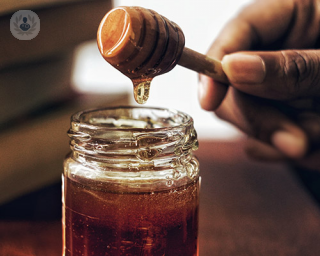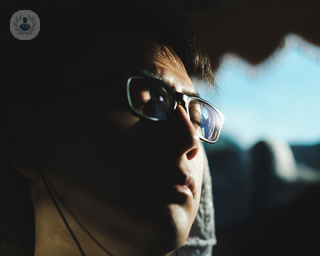Blepharitis
Mr Scott Robbie - Ophthalmology
Created on: 05-26-2017
Updated on: 03-22-2023
Edited by: Conor Lynch
What is it?
Blepharitis is an inflammatory condition of the eyelids. It can be part of a wider inflammation of the eye surface, involving the conjunctiva (the transparent membrane covering the inside of the eyelids) and the white part of the eyeball. (conjunctivitis, blepharoconjunctivitis). It can also affect the cornea (the clear window at the front of the eye) known as blepharokeratoconjunctivitis.
Blepharitis is usually a chronic condition and requires long-term management by daily lid hygiene to remove crusts and oily secretions building up at the base of the eyelashes.

What are the symptoms?
The most common symptoms of blepharitis are:
- a burning or gritty sensation
- the eyes feeling dry
In case of severe blepharitis, symptoms may also include:
- swelling of the eyelids
- pain due to frequent or irregular blinking
- photophobia (light sensitivity)
How is it diagnosed?
The hallmark of blepharitis is redness of the lid margin, with crusty/oily secretions building up at the base of the eyelashes. Your local optometrist or an ophthalmologist can provide an accurate diagnosis following examination of the eyes with a slit lamp microscope.
What causes blepharitis?
The most common causes for this condition are:
- inflammation of the Meibomian glands inside the eyelids - the oily secretions they produce to protect the tear film become too thick and the tear film becomes unstable
- blepharitis can be associated with certain skin disorders (such as rosacea and seborrhoeic dermatitis)
- allergies and environmental factors (smoking, fine dusts or particles)
- in rare cases, disorders related to the digestive tract (problems with digestion or vitamin deficiency)
How can the symptoms be reduced?
Regular eyelid hygiene (warm lid compresses followed by cleaning the lid margins) can make the eyes feel more comfortable. Tear film supplements (artificial tears) can also be helpful in reducing symptoms. Ask your chemist for preservative-free drops, because preservatives in eye drops can make the problem worse.
How is it treated?
The most important part of the treatment is daily lid hygiene. Occasionally, your ophthalmologist may prescribe a short course of strong anti-inflammatory and antibiotic eyedrops if it is important to dampen the eye surface inflammation quickly, for example when it involves the cornea. Avoiding eye oil-based make-up can help to reduce the lid margin inflammation.

















